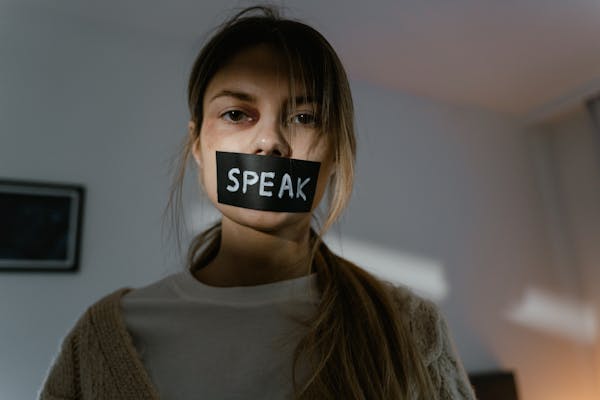In a world where stress, anxiety, and depression have become part of daily life for millions, mental health awareness campaigns are doing something extraordinary: they are breaking the stigma surrounding mental health, offering support, and encouraging open conversations about what many still consider a taboo topic.
These campaigns not only provide education but also serve as beacons of hope, reaching out to those who may not know where to turn.In this article, we explore how these campaigns are making a significant difference, the importance of mental health awareness, and how they contribute to creating a world where people can talk openly about their struggles and seek help without fear of judgment.
The Rise of Mental Health Campaigns
Over the past decade, mental health awareness has seen a dramatic shift. No longer relegated to the shadows, it has become a central topic of conversation in mainstream media, schools, workplaces, and even within families.

Mental health campaigns are playing a key role in this transformation.For many years, mental health issues were misunderstood, often linked with shame or weakness. People who faced mental health challenges were labeled as "crazy" or "unstable," which led to them suffering in silence.
However, organizations, celebrities, and individuals worldwide have been working tirelessly to challenge these misconceptions and educate the public on the significance of mental health care.One of the most impactful campaigns in recent years has been the "Time to Change" initiative in the UK.
Time to Change encourages people to speak up about their mental health struggles while providing vital resources for those seeking help. Their efforts focus on combating the stigma that surrounds mental illness and creating supportive communities for people who are struggling.
Social Media’s Role in Changing the Dialogue
In today’s digital age, social media platforms have become powerful tools for spreading awareness. Hashtags like #MentalHealthMatters, #EndTheStigma, and #BreakTheSilence have gained millions of followers, creating a virtual space where people can share their stories and find support.

Campaigns such as "Bell Let’s Talk" in Canada use platforms like Twitter, Instagram, and Facebook to engage a global audience. For every tweet or social media interaction, Bell, a Canadian telecommunications company, donates a sum of money to mental health programs, thereby making it a community-driven movement.
The combination of awareness and action has led to a measurable increase in donations and mental health advocacy, showing how powerful social media can be in driving change.Moreover, platforms like Instagram, YouTube, and TikTok have allowed individuals to share personal stories about their mental health journeys, helping others feel less alone. These stories often go viral, showing that when people speak up, they give others the courage to do the same.
Corporate Involvement: Changing Workplaces for the Better
Mental health campaigns are not only changing the way society perceives mental health; they are also transforming workplaces. In the past, employees were expected to work without showing vulnerability. Mental health concerns were ignored, and asking for time off due to stress or burnout was often seen as a sign of weakness.

In recent years, however, many companies have started prioritizing employee mental health, realizing that healthy employees are more productive and happier in their roles. Campaigns like "Mental Health at Work" provide businesses with the resources to support their workers' mental well-being, encouraging open conversations about stress, anxiety, and other mental health conditions.
Tech companies like Google and Microsoft have led the charge by offering employees mental health resources, counseling services, and stress-relief programs. These companies promote a culture of transparency and understanding, which has set a positive example for others in the corporate world. The idea is clear: when employees feel supported in all aspects of their health, they thrive.
The Impact on Young People: Empowering the Next Generation
Perhaps the most important impact of mental health awareness campaigns is their effect on younger generations. Today's youth face unique challenges such as academic pressures, social media comparisons, and uncertainty about the future.
As a result, mental health issues among teenagers and young adults are on the rise.Campaigns like "Headspace for Schools" aim to teach children and teens about mental well-being from a young age. By integrating mindfulness and emotional support into school curriculums, these programs help young people develop healthier coping mechanisms and recognize the signs of mental health struggles early on.
Additionally, mental health campaigns targeting younger audiences often focus on destigmatizing seeking help. Teenagers are encouraged to talk about their feelings and reach out to trusted adults or counselors, creating an open environment where mental health is no longer something to hide.
How Mental Health Campaigns Are Saving Lives
At their core, mental health awareness campaigns save lives. By spreading knowledge and offering resources, they ensure that people who are struggling know that they are not alone. They encourage individuals to seek help before their mental health challenges escalate to the point of crisis.For instance, campaigns like the American Foundation for Suicide Prevention’s "Out of the Darkness" walks raise funds for mental health research and provide survivors with a community of support.

By walking together and sharing their stories, participants help to erase the stigma surrounding mental illness, one step at a time.Furthermore, campaigns that focus on suicide prevention have been credited with reducing suicide rates in certain regions. The combination of education, awareness, and outreach ensures that people facing mental health crises receive the help they need before it's too late.
The Road Ahead: A Call for Continued Action
Despite the incredible progress made, there is still work to be done. Mental health continues to be an issue that needs more funding, more understanding, and more open conversations.As individuals, we can make a difference by supporting these campaigns, advocating for better mental health policies, and being more empathetic toward those who are struggling.
We can also continue to push for increased funding for mental health services, particularly in underserved communities.The future is bright, and with the ongoing efforts of these campaigns, we can create a world where mental health is seen as just as important as physical health.
By continuing to break down the stigma, we ensure that those in need can access the support and care they deserve.If you or someone you know is struggling with mental health issues, remember: help is available, and it’s okay to seek it.







Comments(0)